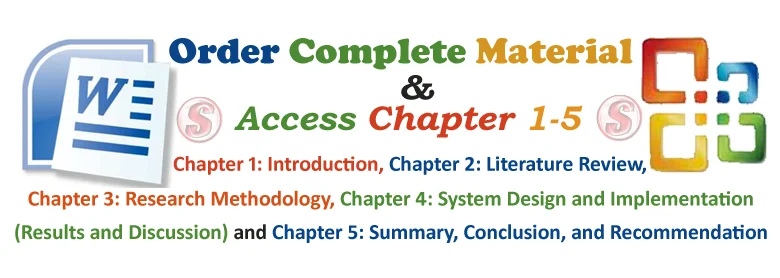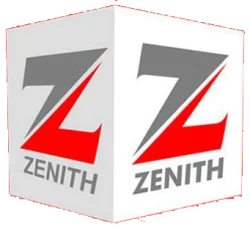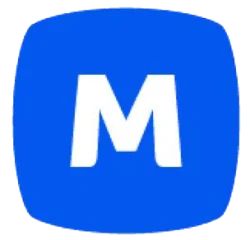1.1 Introduction
The Students Industrial Work Experience Scheme (S.I.W.E.S) is an industrial training program for Nigerian university undergraduate students and other higher institutions. It is a six-month training scheme in which students are attached to relevant industries in their field of study. The Fund for Industrial Training (ITF) is the body responsible for coordinating and financing the program.
As a prelude to other parts of this study, this chapter will discuss the background upon which this study was initiated, the statement of problems that led to this study, the Aim and Objectives of the study. Others are Significance of the study, Scope of work, Limitations of the Study and Definition of technical terms.
1.2 Background of Study
The Students Industrial Work Experience Scheme (SIWES) is a skills training programme designed to expose and prepare students of universities and other tertiary institutions for the Industrial Work situation they are likely to meet after graduation. It is also a planned and structured programme based on stated and specific career objectives which are geared towards developing the occupational competencies of participants (Mafe, 2009). Consequently, the SIWES programme is a compulsory graduation requirement for all Nigerian university students offering certain courses.
The Students Industrial Work Experience Scheme (SIWES), is the accepted training programme, which is part of the approved Minimum Academic Standard in the various degree programmes for all Nigerian Universities. The scheme is aimed at bridging the existing gap between theory and practice of Sciences, Agriculture, Medical Sciences (including Nursing), Engineering and Technology, Management, and Information and Communication Technology and other professional educational programmes in the Nigerian tertiary institutions. It is aimed at exposing students to machines and equipment, professional work methods and ways of safeguarding the work areas and workers in industries, offices, laboratories, hospitals and other organizations.
Prior to establishing the Scheme, industrialists and other employers of labor felt concerned that graduates of Nigeria Universities were deficient in practical background studies preparatory for employment in Industries and other organizations. The employers thus concluded that the theoretical education being received in our higher institutions was not responsive to the needs of the employers of labor. Consequently, the rationale for initiating and designing the scheme by the Industrial Training Funds ITF, in 1973.
The scheme is a tripartite programme involving the students, the universities and the employers of labor. It is funded by the Federal Government and jointly coordinated by the Industrial Training Fund (ITF) and the National Universities Commission (NUC).
1.3 Statement of the Problem
The Industrial Training/Students Industrial Work Experience Scheme is usually intended for students to get valuable work experience relating to their field of study, due to the difficulty in getting work placement students often find themselves getting jobs in areas far away from their institutions. Supervisors have to wait till the end of the training scheme to assess the performance of the students. As a result of this problem, supervisors find it very difficult to monitor the progress of the student regularly.
1.4 Aim and Objectives of Study
The aim of this study is to design and implement an interactive online platform for students and school supervisors to communicate regularly during the students IT/SIWES attachment. In achieving this aim, the following specific objectives were laid out as follows to design and develop a system that will enable:
- School supervisor monitor the progress of the students during their IT/SIWES training.
- Students and supervisors communicate regularly, this in turn enables the student to provide feedbacks regarding problems encountered during his/her training program.
- Lecturer / Supervisor determine if the student is gaining relevant work experience during the IT/SIWES training.
1.5 Significance of Study
This study will help to bridge the communication gap between students and supervisors during the students IT/SIWES training programming, it seeks to provide a steady communication stream via the use of online resources, so as to ensure effective monitoring of students, irrespective of the distance where the student is carrying out his/her training.
This study will be of immense benefit to other researchers who intend to know more on this study and can also be used by non-researchers to build more on their research work. This study contributes to knowledge and could serve as a guide for other study.
1.6 Scope of the Study
This study covers the student and lecturer/supervisor progress report. The automation involves an online portal where the student and lecturers/supervisors can interact regularly.
1.7 Limitations of the Study
As a result of the various stages involved in IT reporting, this research work would be limited to only weekly feedbacks, and the full technical reports submitted at the end of the IT/SIWES exercise. Also this research is limited to an online interaction between a student and his/her supervisor.
1.8 Definition of Terms
Management: The organizing and controlling of the affairs of a business or a sector of a business
System: A combination of related parts working together to achieve a particular aim.
Data: Numbers, Text or image which is in the form suitable for Storage in or processing by a computer, or incomplete information.
Information: A meaning full material derived from computer data by organizing it and interpreting it in a specified way.




